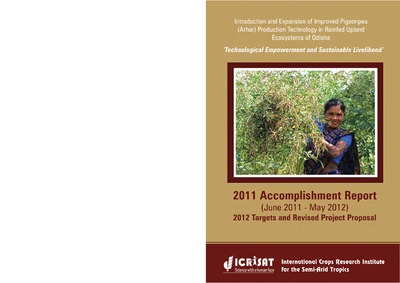Introduction and Expansion of Improved Pigeonpea (Arhar) Production Technology in Rainfed Upland Ecosystems of Odisha: Technological Empowerment and Sustainable Livelihood
Abstract
Pigeonpea is mainly grown on rainfed upland areas and is one of the most important pulse crops of Odisha. It is an affordable source of protein (22-24%) and contains carbohydrates, minerals and vitamins. Pigeonpea, which is a good source of essential amino acids, carbohydrates and minerals, can be an excellent crop to promote food and nutritional security in Odisha. However, its productivity is at 415 kg/ha compared to the national average of 700 kg/ha and with very low seed replacement ratio of 2-3%. A large section of farmers in the rainfed upland ecosystems of Odisha have remained isolated from improved varieties and management practices of pigeonpea for various reasons. There is ample scope for the expansion of high yielding short and medium duration pigeonpea varieties in the rainfed areas for the development of sustainable livelihoods. Thus, this proposal was conceived. This proposal intends to introduce and expand the production of high yielding pigeonpea by the initiation, selection and promotion of pigeonpea through a farmer participatory mode. The International Crops Research Institute for the Semi-Arid Tropics (ICRISAT), in partnership with Department of Agriculture, Odisha; 6 Odisha University of Agriculture and Technology, Bhubaneswar; farmers and self-help groups (FSHG) sought funding support from Department of Agriculture, Government of Odisha for the promotion of improved pigeonpea production technology (IPPT) in three districts of Odisha (Kalahandi, Rayagada, and Nauparha) from 2011 to 2015

